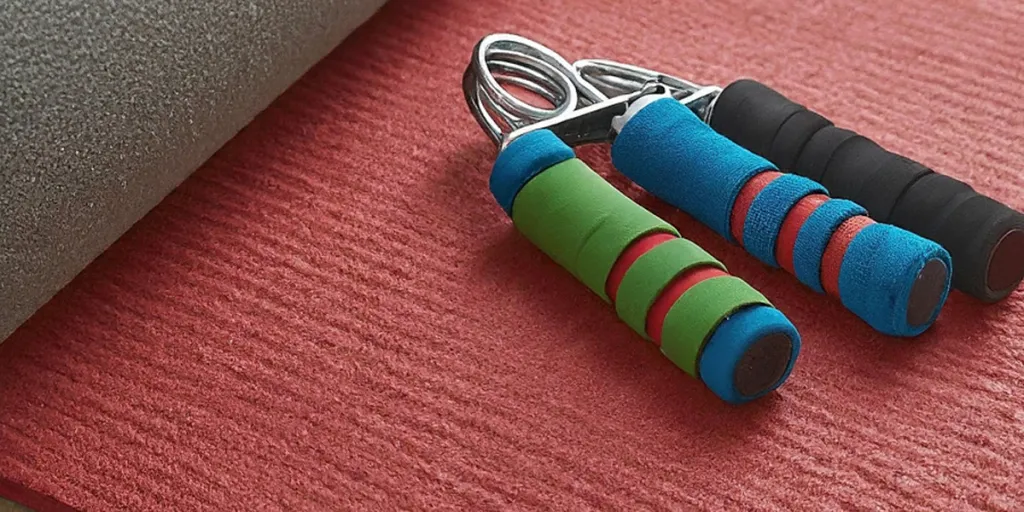Many people consider fitness a necessary part of life. After all, people who exercise regularly tend to live healthier lives than those who don’t. But recently, strength training and muscle building have been gaining more attention. This trend has pushed many people toward grip trainers, making them a hot-selling item in 2024. Keep reading to learn why grip trainers are worth adding to your fitness inventory this year, and how to stock the best options on the market.
Table of Contents
What’s the state of the grip trainer market?
What consumers are looking for in grip trainers
Bottom line
What’s the state of the grip trainer market?
The grip trainer market is experiencing tremendous growth. Experts say the global market will reach US$ 1.14 billion by 2030, growing from US$ 784.2 million in 2023 at a 5.4% compound annual growth rate (CAGR). Consumers are becoming aware of the benefits of hand and forearm strength for daily tasks and athletic performance, which has also helped boost demand for grip trainers.
Experts also predict that the increasing popularity of home fitness will drive even more growth for the market. Moreover, adjustable grip trainers generated the highest revenue in 2023, and research suggests they will expand rapidly over the forecast period. North America also dominated the regional market and will maintain this lead from 2024 to 2030.
What consumers are looking for in grip trainers
Ease of use

Frustration with complicated devices can lead to device abandonment. However, beginner-friendly options foster positive associations with grip training. In truth, simpler grip trainers are less intimidating for those without extensive workout experience.
Plus, simple-to-use grip trainers can attract a much wider range of customers, including beginners, seniors, and individuals with injuries or physical limitations. More importantly, the easier grip trainers are to use, the less likely consumers will return them out of frustration.
Addressing ease of use is not complicated. First, business buyers must look for grip trainers that enable users to switch resistance levels to match their skills and progress. They must also ensure that the resistance levels of settings are easy to understand and visible on the equipment. However, not all grip trainers come with adjustable resistance.
Non-adjustable grip trainers are a favorite for beginners. So, when marketing them, choose resistance levels (more on this below) that are perfect for the target audience. Instead of stocking individual non-adjustable grip trainers, retailers can sell them in packs of 3 or more with increasing resistance levels. This marketing strategy caters to progression and removes the need for constant adjustments.
Resistance levels
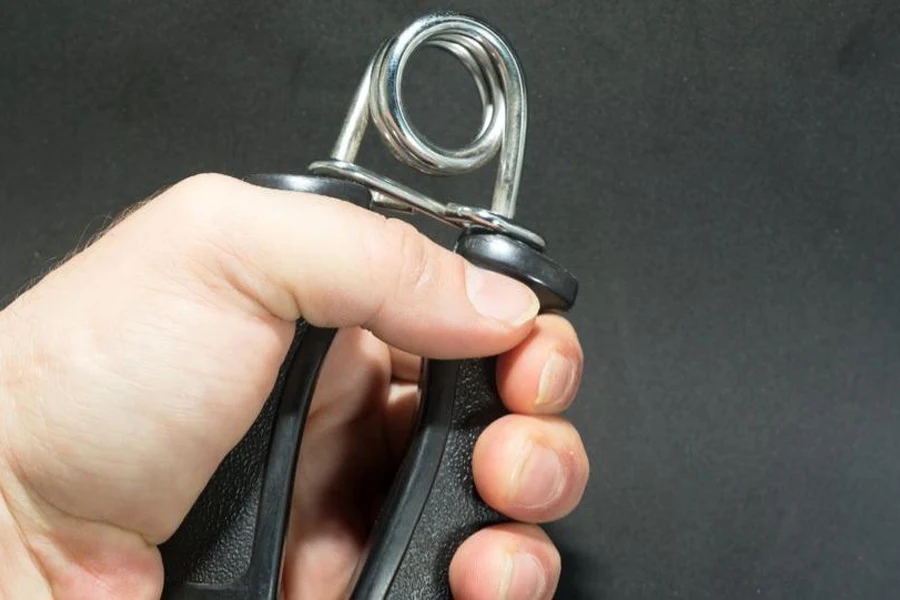
The previous section showed that resistance levels are critical when choosing grip trainers, and here’s why. Grip strength varies greatly between individuals. So, offering a range of resistance levels ensures retailers have options for beginners and experienced athletes.
Businesses can check for several classifications (these can vary by brand/model) to see a grip trainer’s resistance level before buying. One uses color codes, while the other utilizes numerical values. Here’s a table showing both classifications and their descriptions.
Color-coded resistance level chart
| Resistance level | Description | Color code |
| Low resistance | Ideal for beginners, physical therapy, or rehabilitation. | Often color-coded as green or blue. |
| Medium resistance | Suitable for those building foundational strength or athletes in maintenance phases. | Yellow or orange coded. |
| High resistance | Targets advanced users and serious athletes looking to push their limits. | They are often coded red or black. |
Numerical resistance rating chart
| Resistance level | Numerical ranges (force required to close in pounds fully) |
| Low resistance | Usually, around 20 to 50 lbs of resistance |
| Medium resistance | It can range between 50 to 100 lbs. |
| High resistance | It starts around 100 lbs and can exceed 200+ lbs for extremely strong users. |
Expert marketing tip: Ensure grip trainers have clear labels or displays indicating their resistance level. Also, display charts to show customers a progression plan as their grip strength improves. Remember, some manufacturers may use kilograms instead of pounds, so offering conversion charts will be helpful if retailers stock brands using both units.
Purpose

Customers have specific problems they want to solve when shopping for grip trainers. It could be getting a stronger grip for rock climbing, improved hand strength for daily tasks after surgery, and many other reasons. Retailers can increase the value of their offers by matching the products to the customer’s purpose.
Generally, retailers can divide grip trainers into three categories: general strength and fitness, injury recovery and rehabilitation, and sports-specific training. Then, they can offer different types under each category to satisfy consumers’ needs.
General strength & fitness
| Grip trainer type | Description |
| Spring-loaded hand grippers | It’s the classic option. It has a version with adjustable resistance, offering enough versatility for beginners and advanced users when improving overall grip strength. |
| Stress balls | Simple but effective. These balls combine stress relief with gentle grip strengthening for everyday fitness or those with limited dexterity. |
Injury recovery & rehabilitation
| Grip trainer type | Description |
| Therapy putty | Offers customizable resistance levels for rebuilding hand and finger strength after injuries. It often comes in various densities, from very soft to firm. |
| Hand extension exercisers | This product focuses on flexibility and range of motion. It’s crucial for maintaining healthy hand function during recovery. |
| Individual finger strengtheners | These isolate specific fingers or knuckles for targeted rehabilitation. Customers often need them to regain fine motor skills. |
Sports-specific training
| Grip trainer type | Description |
| Rock climbing grip trainers | These mimic the pinch and crush grips popular in climbing. The grip trainers often have adjustable resistance to simulate different holds and difficulty levels. |
| “Fat Gripz” or barbell grips | These thickening devices increase bar diameter, making grip more challenging for weightlifters looking to improve deadlifts, pull-ups, and other strength-based exercises. |
| Golf-specific trainers | Manufacturers design these to improve wrist hinge and grip strength, optimizing golf swing. |
Resistance mechanism
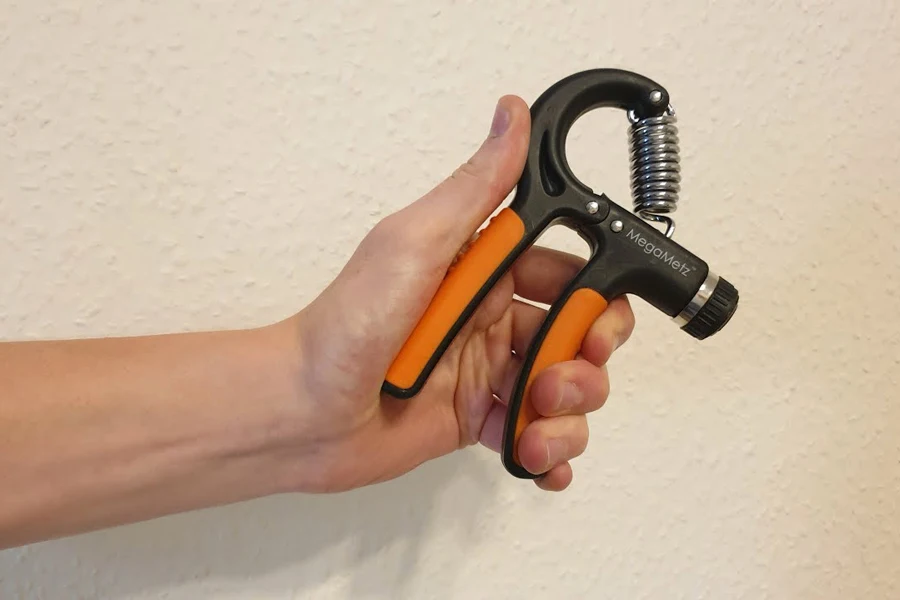
Grip trainers may also use different mechanisms to provide resistance. Various mechanisms can create slightly different force distribution patterns, potentially engaging specific hand and forearm muscles to a greater degree. The four main ones to look for include spring-loaded, coil, articulated, and hydraulic grip trainers.
Spring–padded trainers
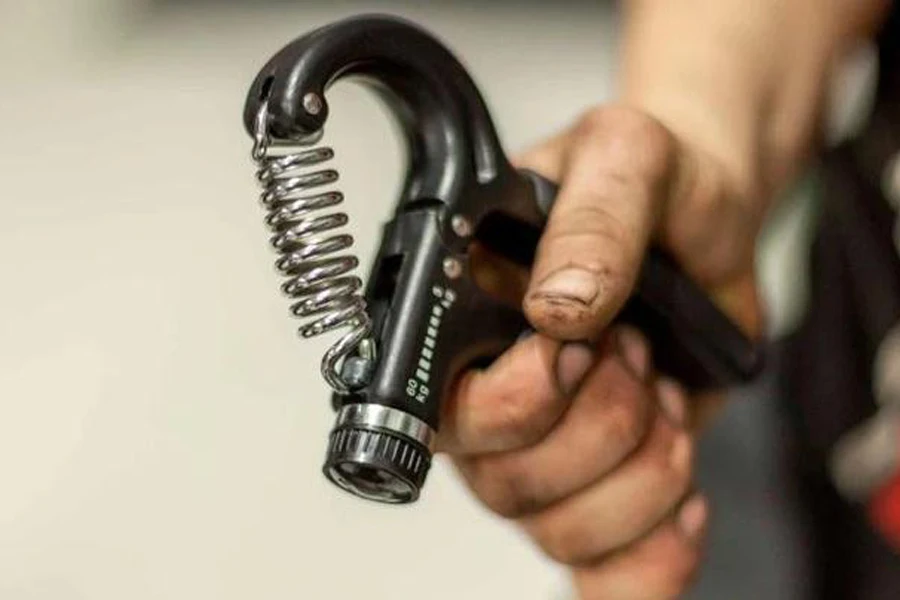
These grip trainers use metal springs that compress and create resistance as customers squeeze the handles. Spring-loaded trainers are also the simplest and most affordable mechanism. They are highly durable and may offer various adjustable resistance options.
Coil trainers
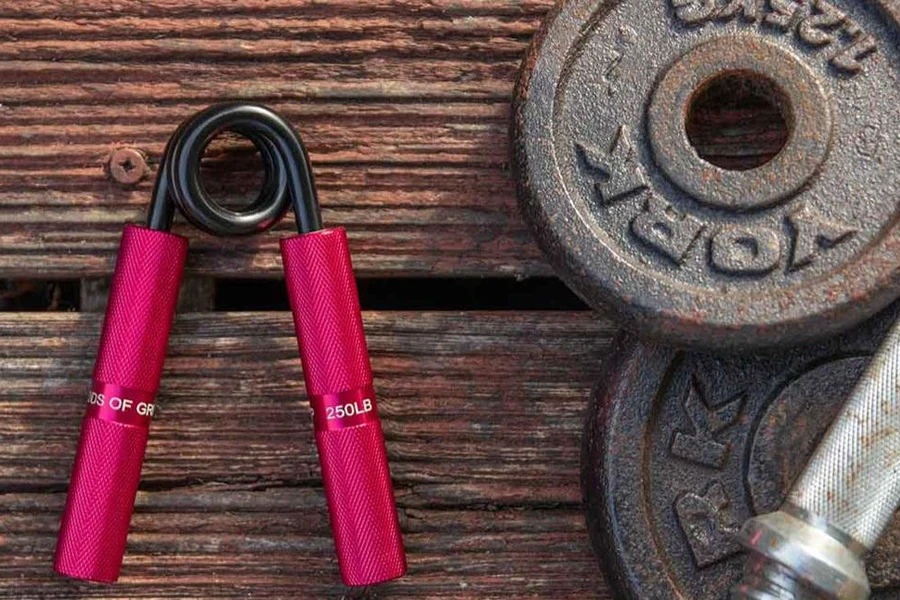
Coil grip trainers use contract metal coils, creating resistance when consumers grip them. Usually, they provide a smoother and more natural squeezing feel than springs for some users. However, these trainers may be slightly bulkier and less adjustable than their spring-loaded counterparts.
Articulated grip trainers

These employ levers or hinges that offer resistance when users squeeze their handles. Articulated grip trainers provide a very different squeezing motion than springs or coils, allowing them to target specific muscle groups through handle designs. Nevertheless, their designs may be too complex for beginners, and they are also more expensive.
Hydraulic grip trainers
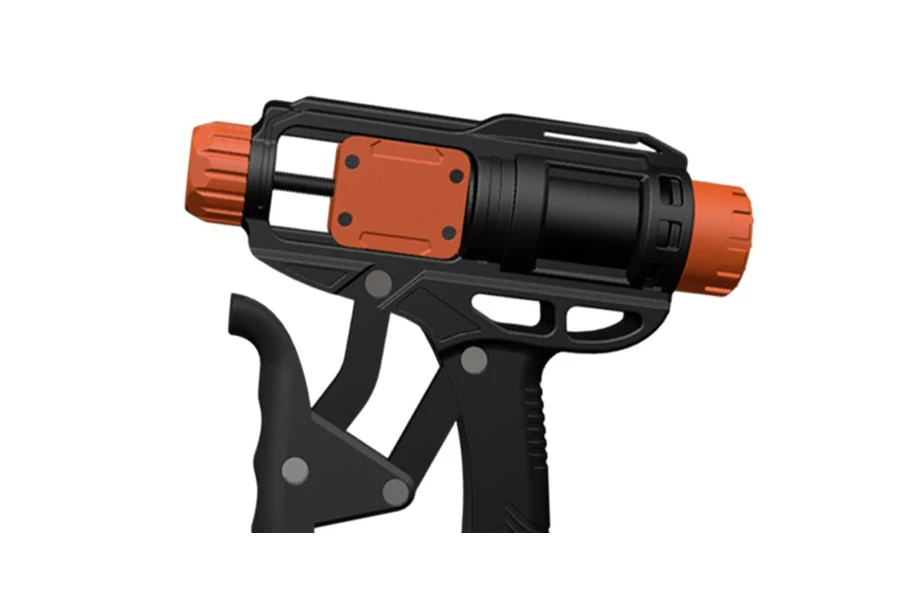
The mechanism of these trainers takes a different route. They use internal hydraulic cylinders that compress fluid to create resistance. The results show smooth, consistent resistance throughout the user’s hand movement. They are also more compact and portable than other types.
Fixed vs. adjustable
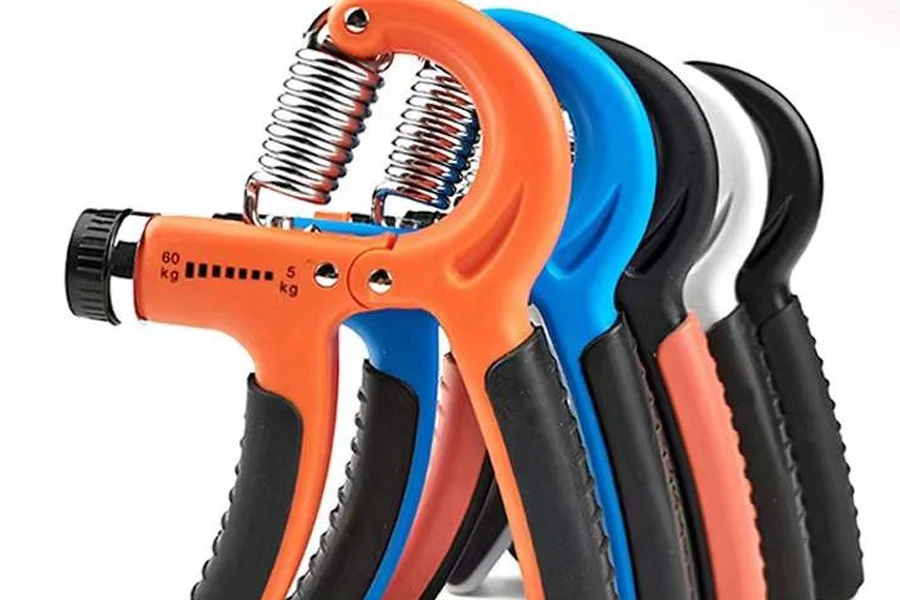
By now, retailers have seen words like “adjustable” and “non-adjustable” a lot in this article. But don’t worry. This section will shed more light on what these terms are referring to. First up are fixed resistance grip trainers.
These trainers have a predetermined resistance level that users can’t change. Typically, businesses can find them in spring-loaded mechanisms, but coil or articulated versions exist too. Fixed grip trainers are usually budget-friendly and easy to use since they don’t require adjustments.
On the other hand, adjustable resistance grip trainers allow users to modify their products, usually through dials, springs, or other mechanisms. These trainers can have spring, coil, articulated, or hydraulic types. Plus, they can handle various exercises and grip training styles.
Many consumers prefer adjustable grip trainers because they can change according to their progress—there is no need to buy new trainers every time. Although they cost more than fixed variants, adjustable trainers offer long-term value, making them the most popular option today.
Bottom line
With the knowledge from this guide, retailers are ready to transform their inventory into a haven for athletes and fitness enthusiasts seeking that next level of performance. Whether they are climbers scaling new heights or weightlifters chasing personal records, the right grip trainers will empower them to reach their goals.
How many people are searching for this product in 2024? 40,500 in March, according to Google data—so stock up now while the demand is high to benefit from this profitable market. And don’t forget to get more updates and topics like this by subscribing to Alibaba Reads Sports section.
